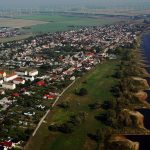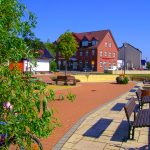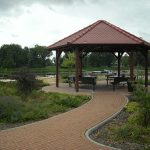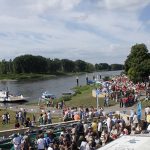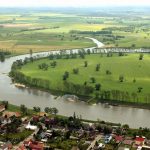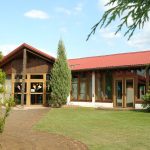Elster (Elbe), Saxony-Anhalt, Germany
The municipality Elster (Elbe) with its 2,558 in -habitants is situated South of the end moraine “Fläming” in the valley where the river Elbe originates, almost exactly between the big cities of Berlin, Halle/Leipzig, Magdeburg and Dresden. The federal road goes directly through the heart of the locality. Three quarters of the municipal land have been marked as agricultural surfaces. At the mouth of the Schwarze Elster into the Elbe, the path of the river Elbe with its ever-changing past in front of the Luther town Wittenberg ended its name to the historic settlement. The rich natural biosphere reservation Mittelelbe with numerous protected nature reserves give the landscape its unique character.
For many years the river has marked the economy of the area. Until the end of the war, Ulster was an important locality for ships and in the year 1893 a specific school for shipmen was founded to that end. After the end of the war, most ship men changed their occupation and found work in the industrial plants in Wittenberg.
Today the Elbe sets more of a touristic impulse. Apart from the aspect of boat tourism, the Elbe Fernradweg leads bicyclists through Elster. This has resulted in over 3,000 overnights per year so far, 85 % of which fall in the time between April and October. The touristic attraction of the area is increased through a camping site with 40 spaces for tents and another 40 sites for vans.
The number of inhabitants, however, has been decreasing steadily during the past 40 years. During this period, Elster has recorded a decrease of 18.1 % – considerably less than the district Landkreis Wittenberg with 25 % and the state of Sachsen-Anhalt with 26 %. Reasons for this are the high quality of life through the educational offerings on site, the attractive and varied sports facilities (stadium, gym, bowling, tennis courts, cross golf, hockey, etc.) and the colourful social life organised in societies and associations, making the strong individual commitment almost natural. In 2008, Elster was awarded the third prize in the regional competition “Most child and family friendly municipality”.
Before 1990, apart from agricultural enterprises a big concrete plant provided workplaces for the locals, today a special supplier for car manufacturers and small businesses dominate the economic environment. The land is mainly used for agriculture and the wind park Elster, the latter comprising 54 plants which supply energy to about two thirds of the population in the Landkreis Wittenberg. Presently, four more plants are being build. The regenerative energy use are supplemented with solar roofs and geothermal energy both on the private and the industrial sector. A bio gas plant will also be in operation shortly. The ecological approach is also mirrored in the energetic refurbishment of communal facilities and the re-use of formerly sealed surfaces of the concrete plant as a public leisure park.
The use of public spaces deserves special recognition. The market place and the Elb-Promenade with the car ferry are in the process of being reconstructed as an attractive space for young and old, inhabitants and visitors alike, referring to local topics. Even after their reuse, the historic fishery, storage and farm houses are still characterising the distinct look of the village, sales and service facilities are integrated at the back of the market and a residential home for seniors and the extension of the communal house with three museums also fit into the overall theme. A painstakingly re -furbished and modified typical old farm house in Meltendorf is now home to people suffering from addictions.
Projects in the areas museums and schools, the creation of important service facilities, the responsible use of natural resources, activities to maintain rural traditions and the regional construction culture re-using existing historical buildings and the careful use of public spaces proof that the municipality has managed to find a new orientation under changed economic conditions.
Evaluated: 2010

